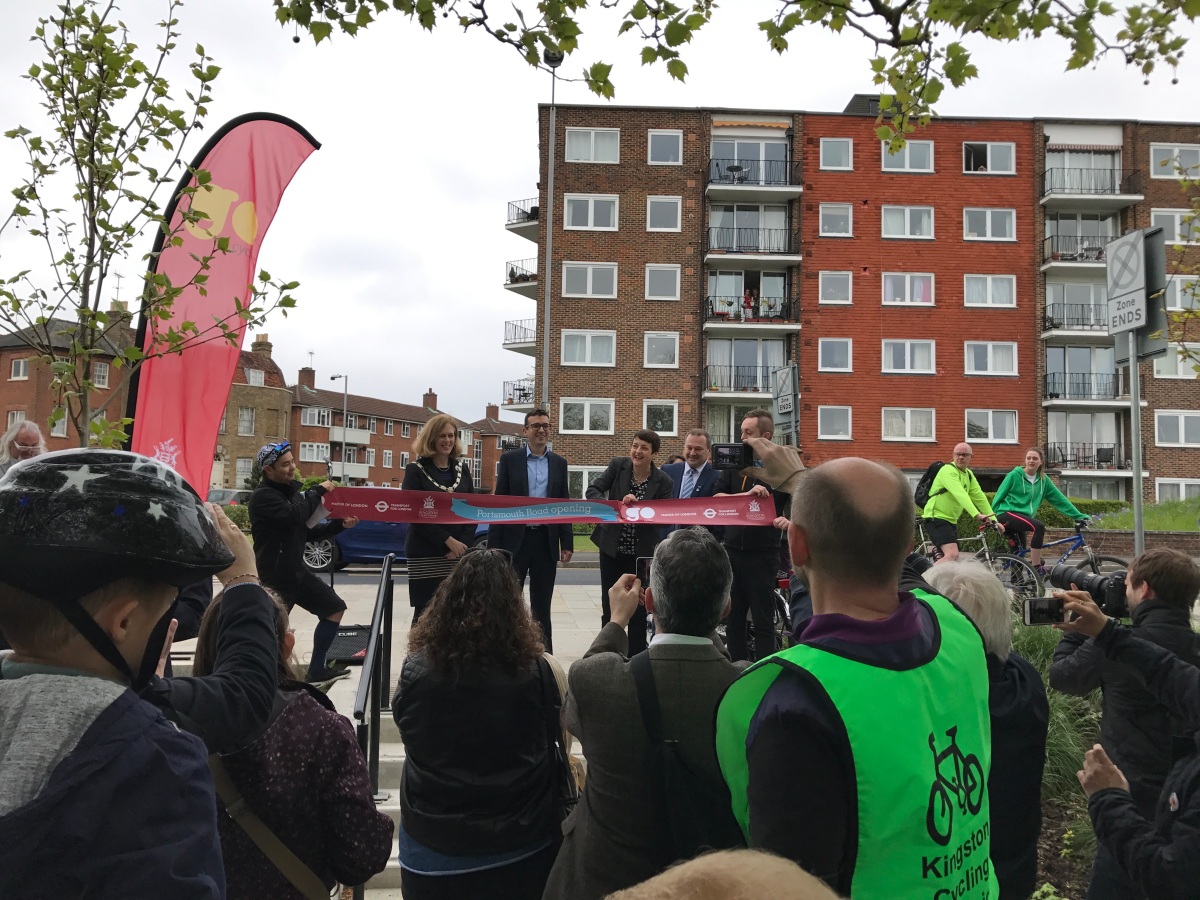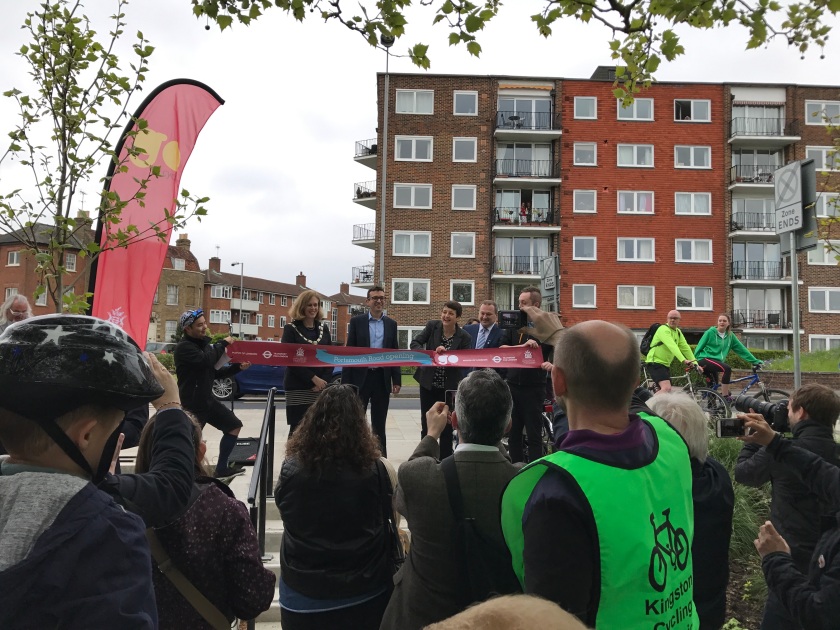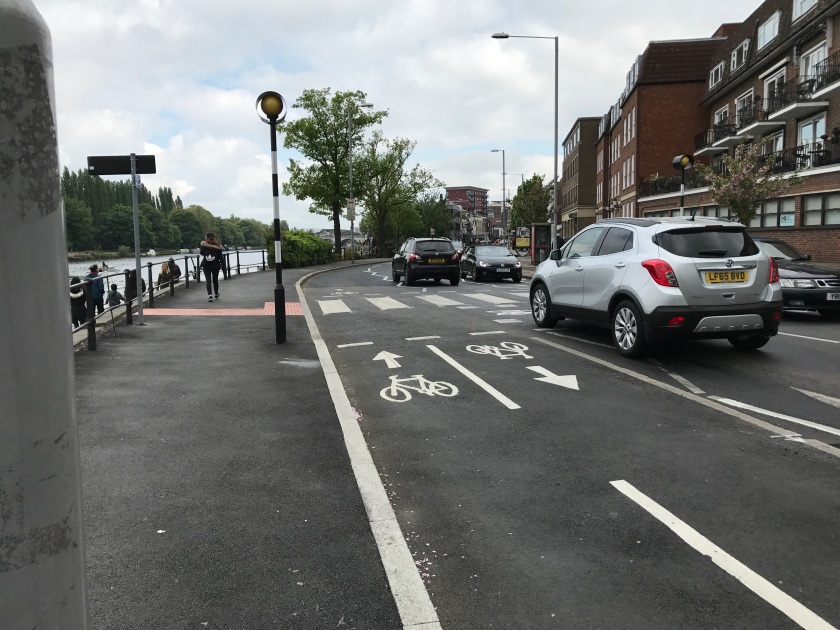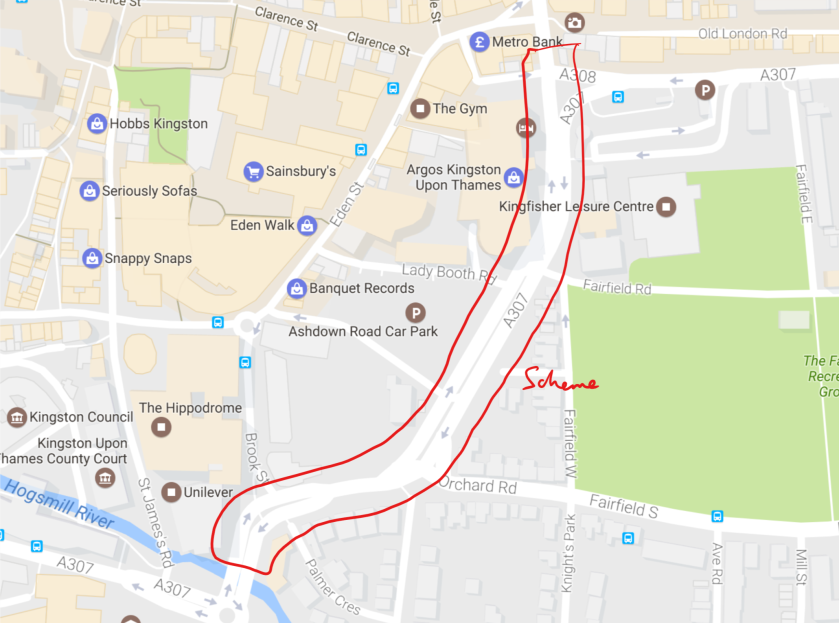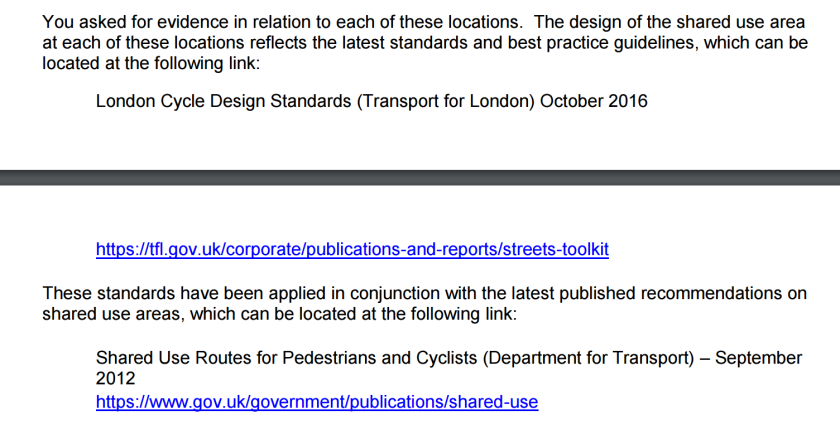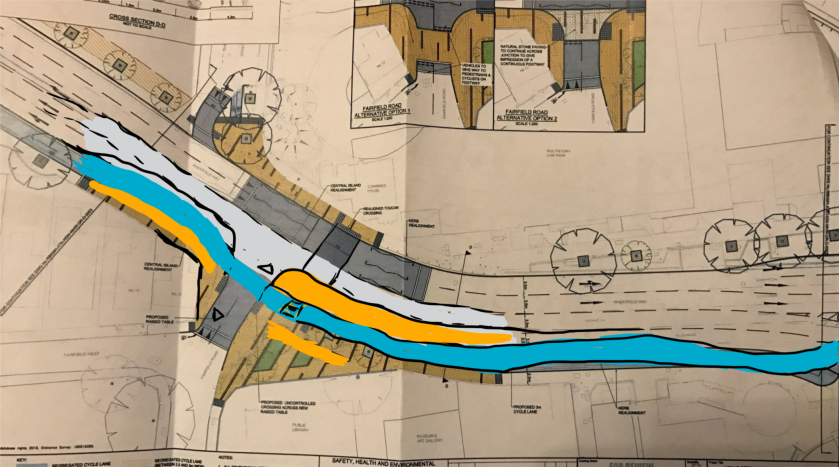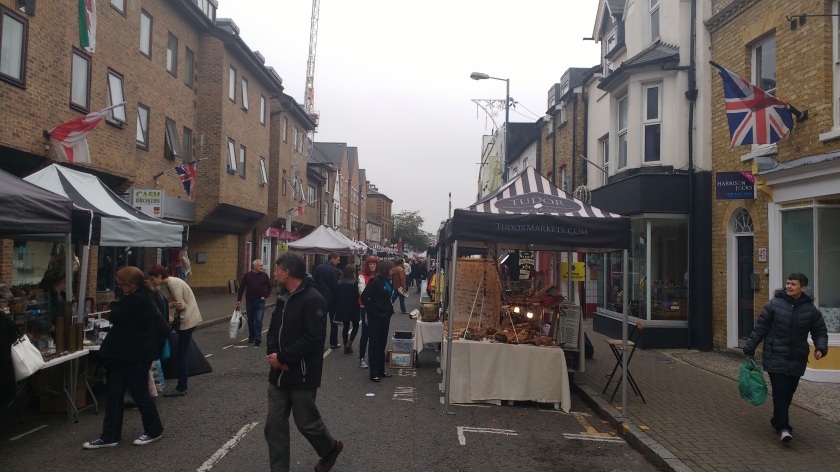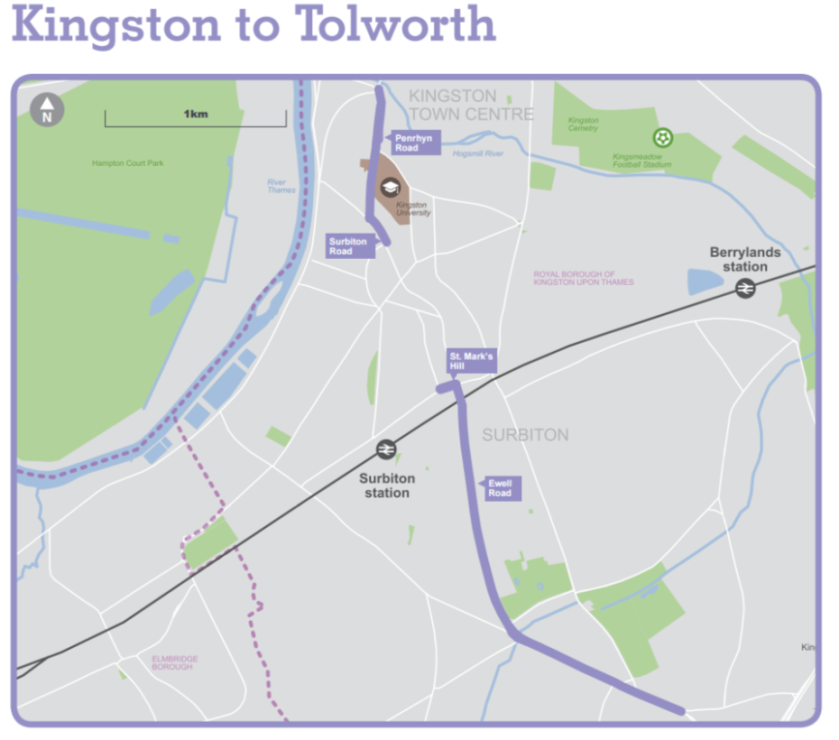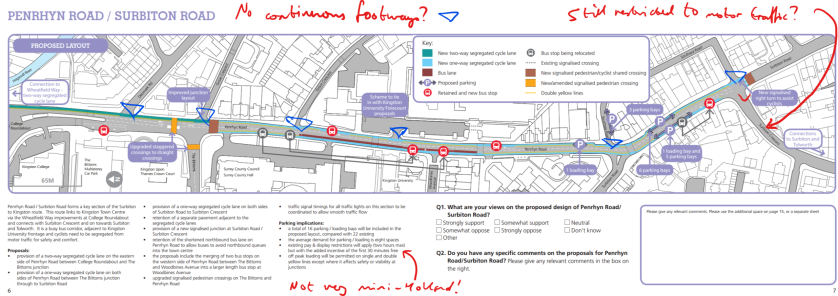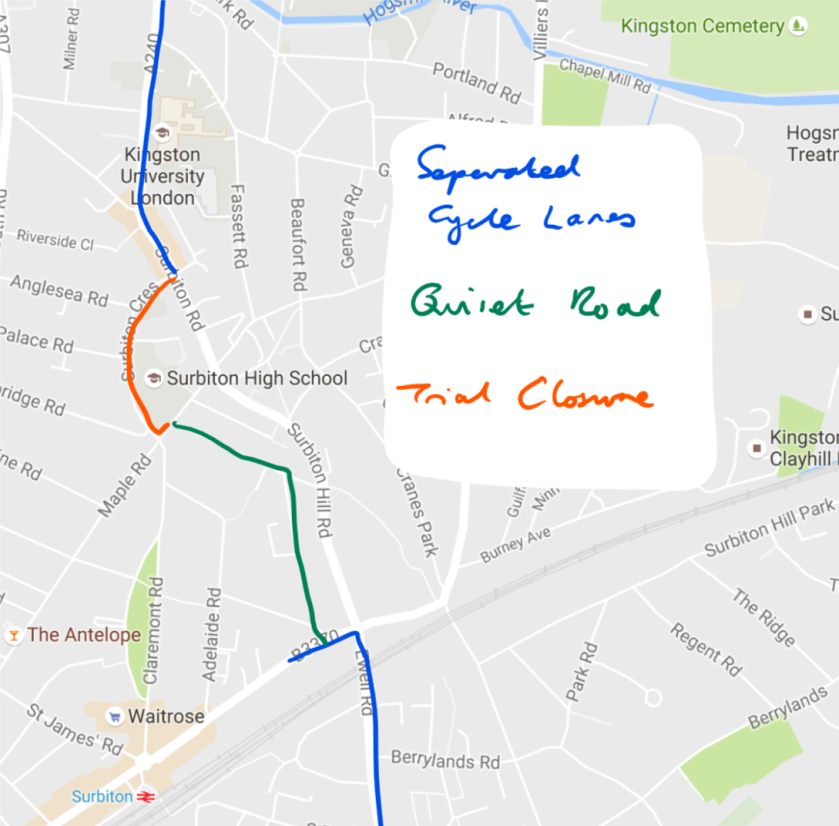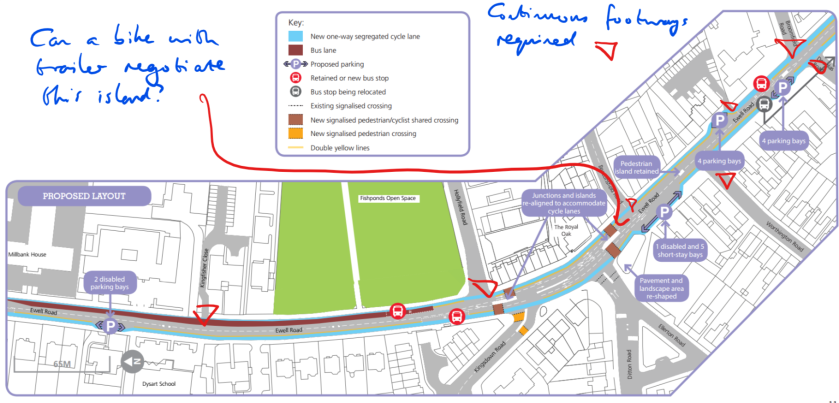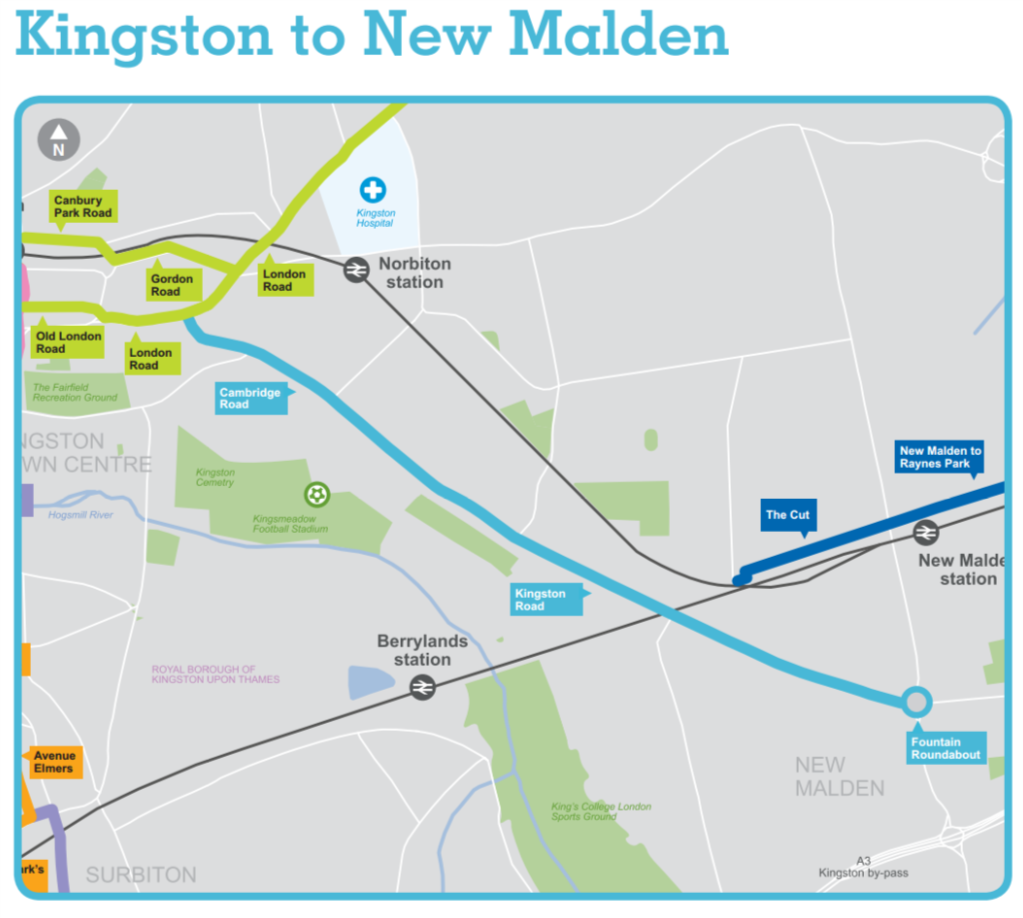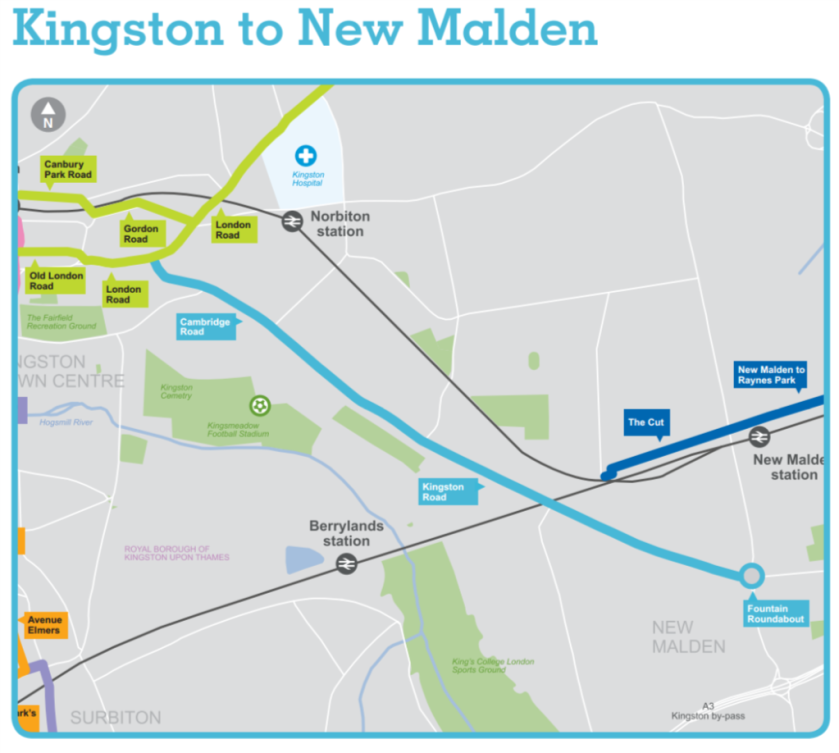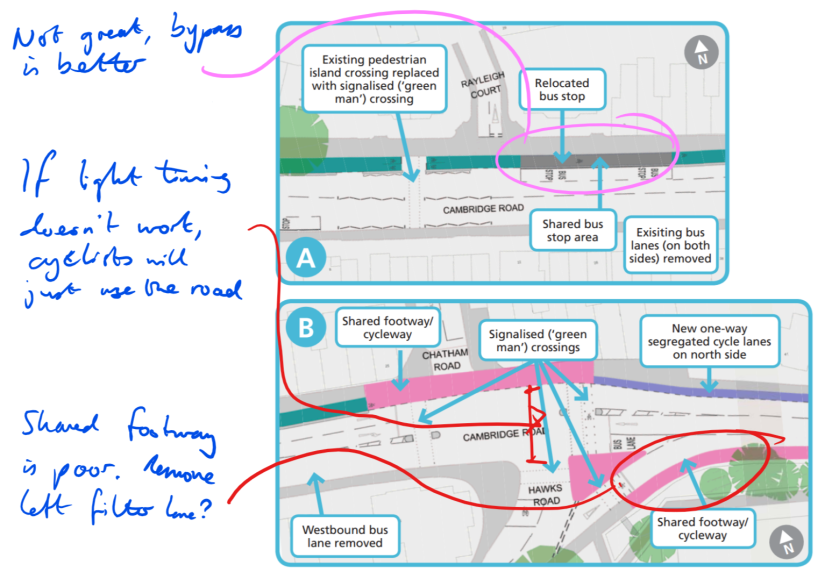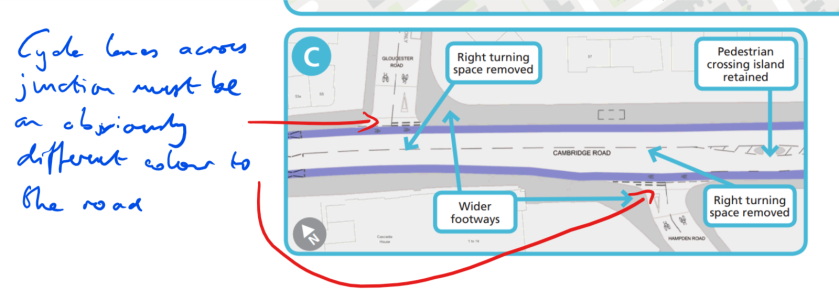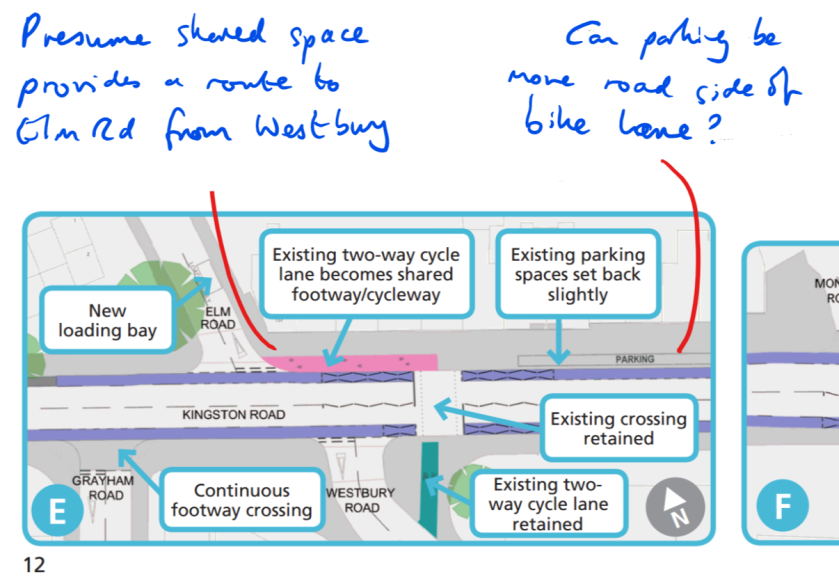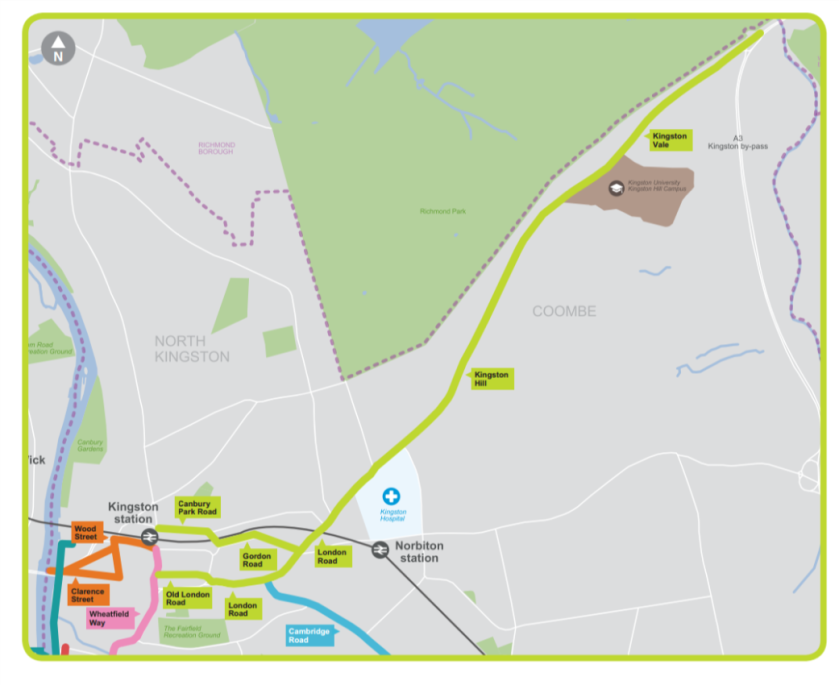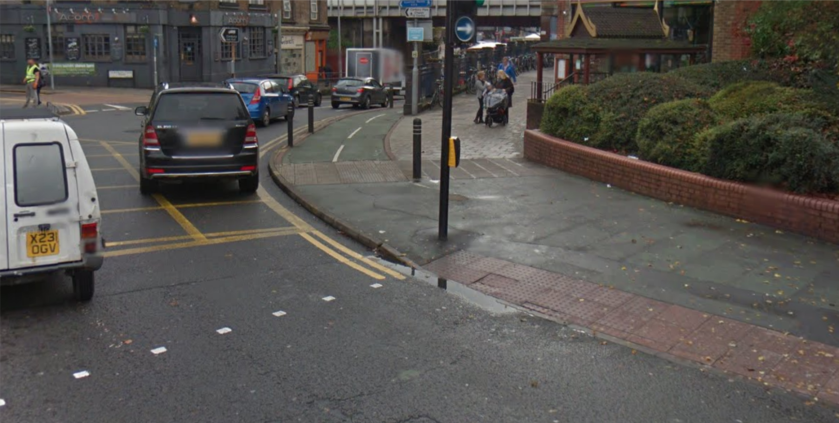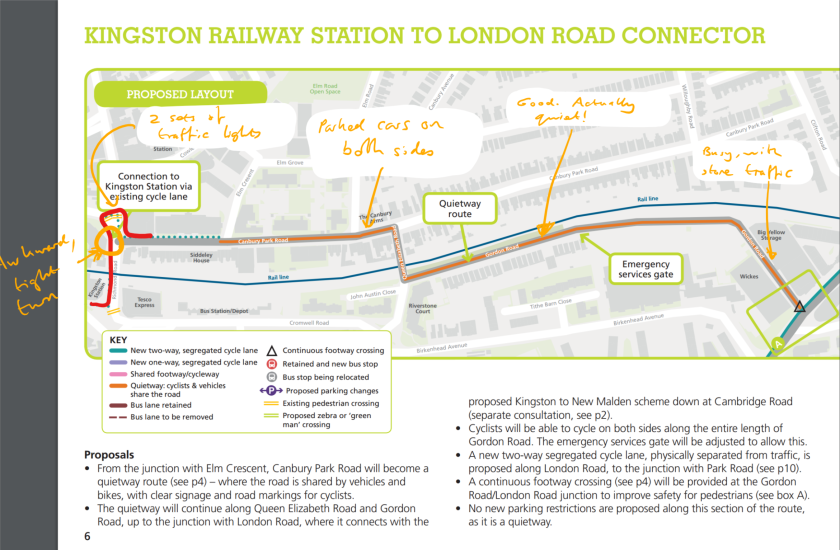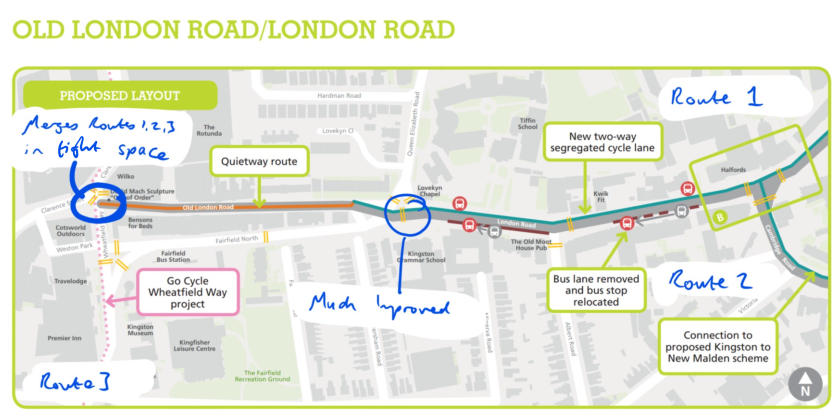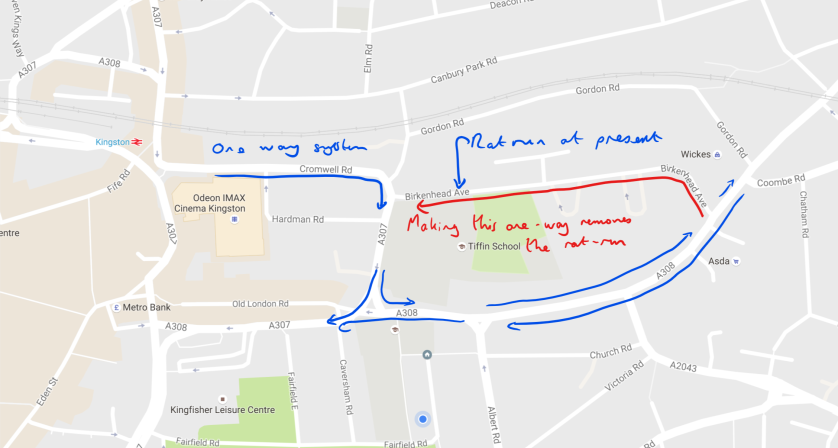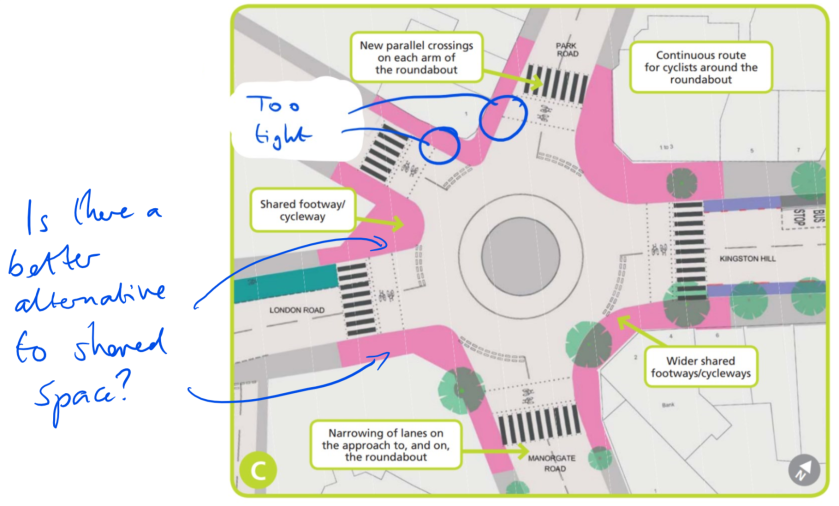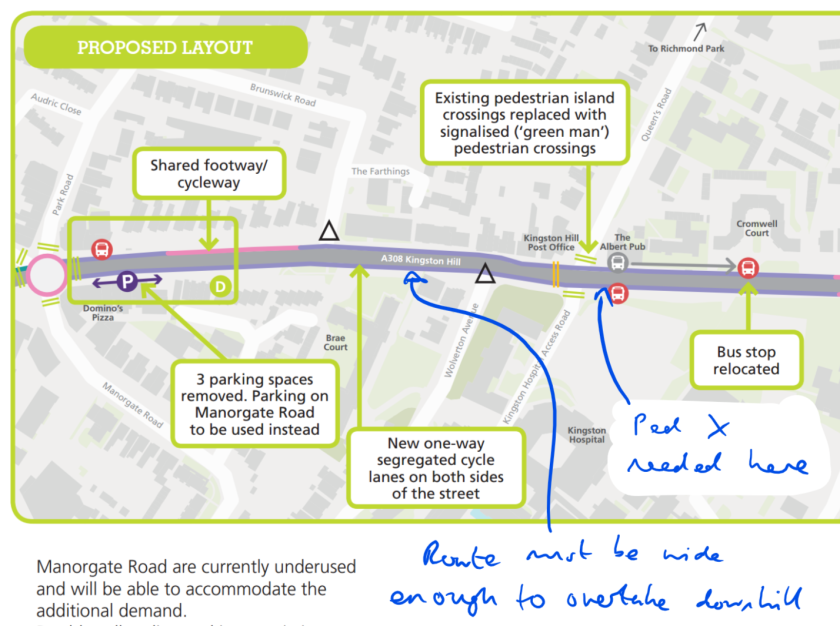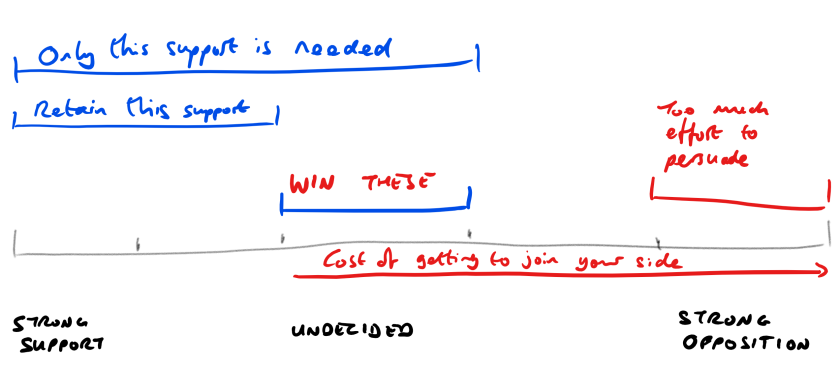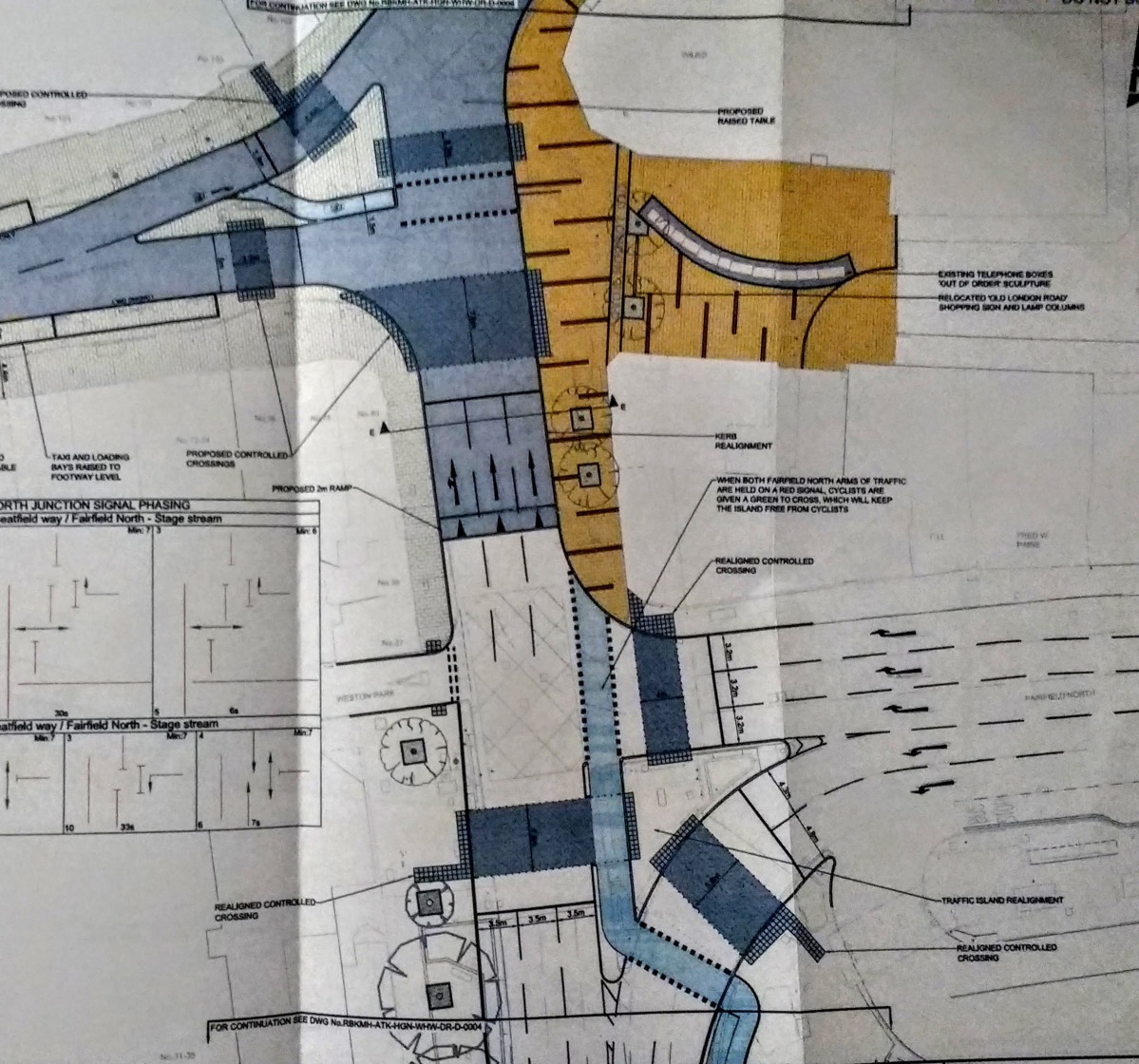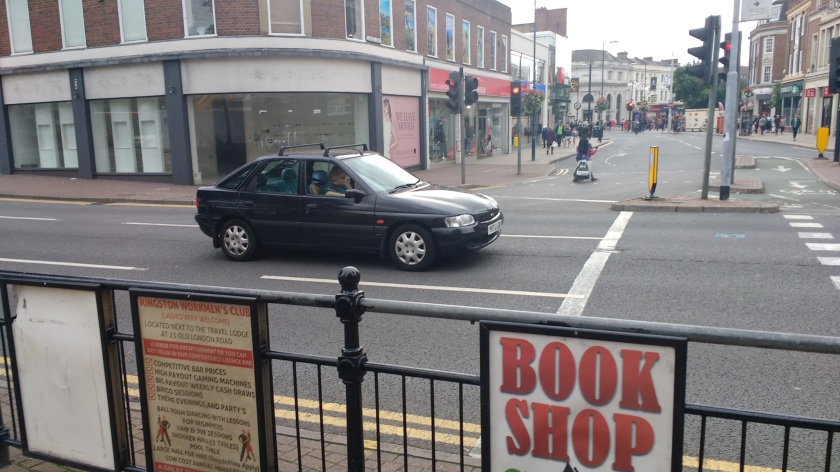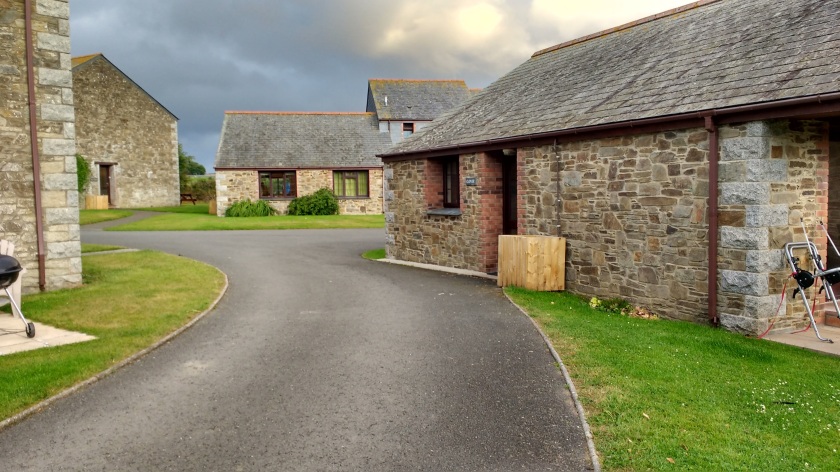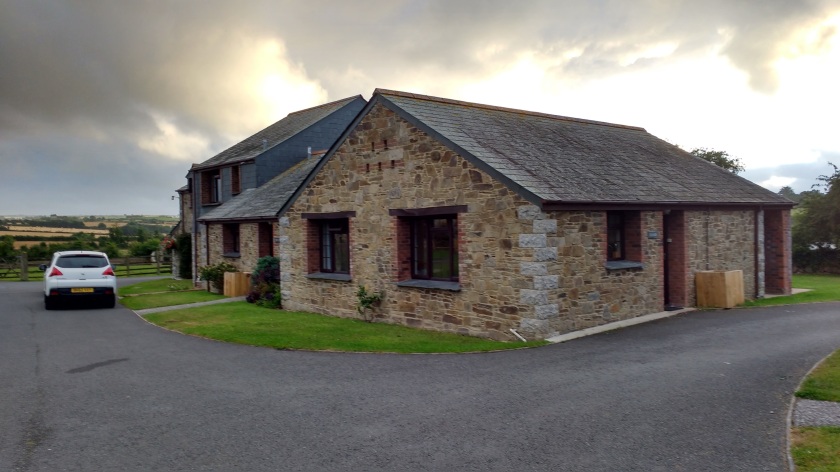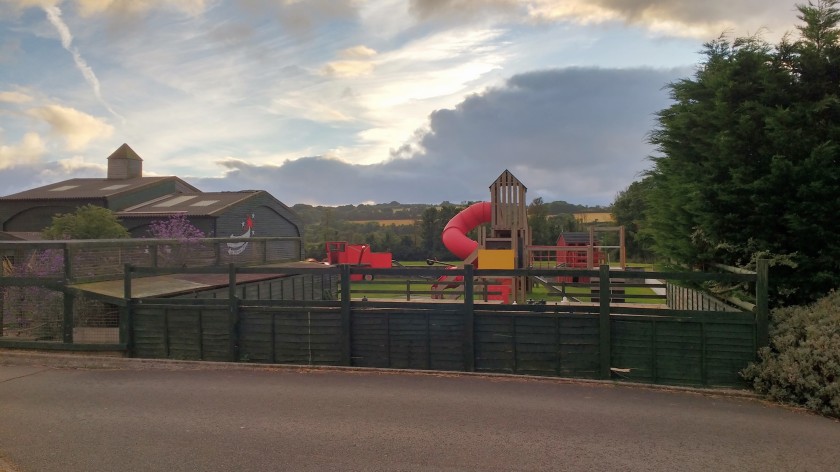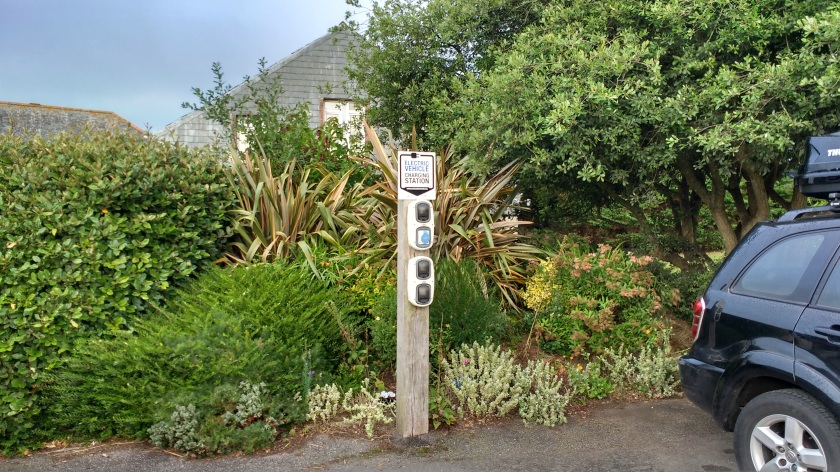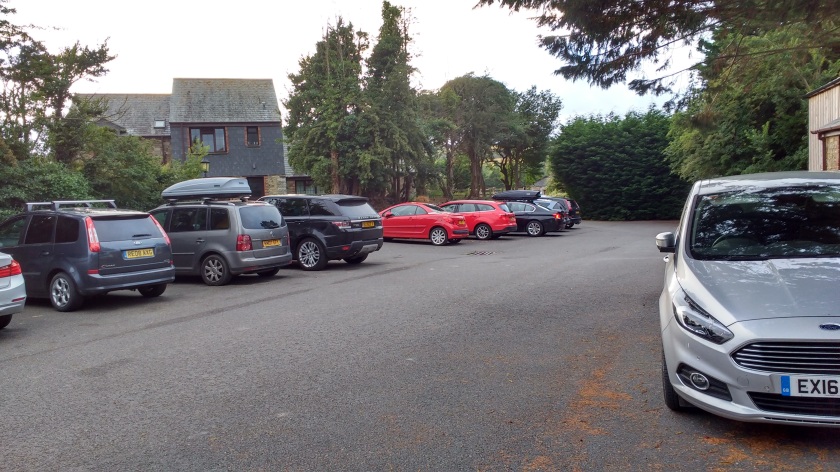Background
Kingston Council has already completed one of its GoCycle (formerly mini-Holland) schemes and has several more at various stages of implementation.
The council is now inviting feedback for two new, smaller, schemes. The first extends the Portsmouth Road scheme to the town centre, while the second revives the New Malden to Raynes Park link that was postponed amidst the threat of massive bills from Thames Water and hysterical claims in local newspapers.
Interestingly, both consultations follow a different pattern to the previous ones, with neither asking whether the reader actually supports the proposal. This should make for a lot of qualitative data in the Comments section.
Note that the New Malden route has been published before but didn’t reach consultation stage.
Kingston High Street
Closing date: 17 July 2017
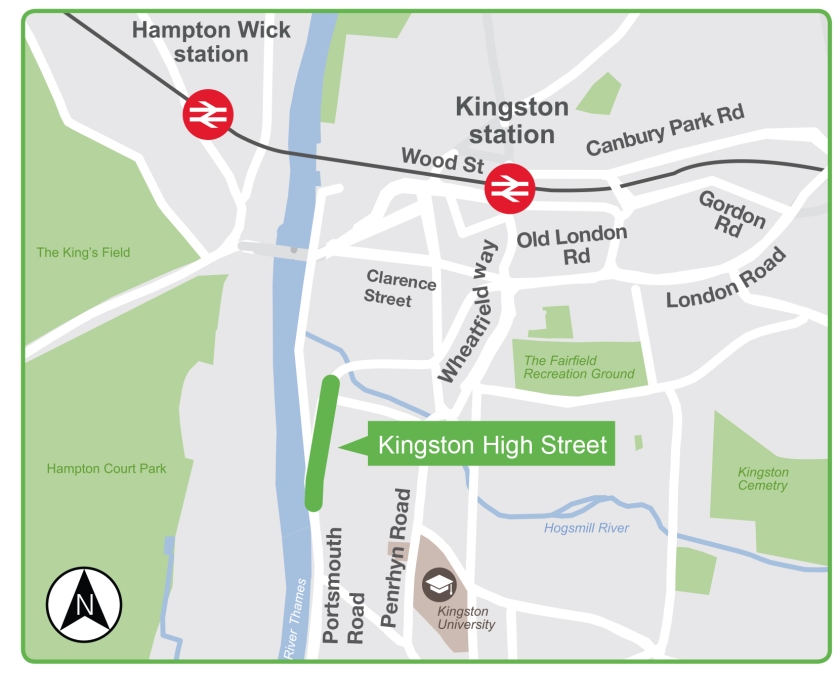
As the map suggests, this is a short route, completing the recently finished Portsmouth Road section. The detail is shown below:

Here’s the overview provided in the consultation:
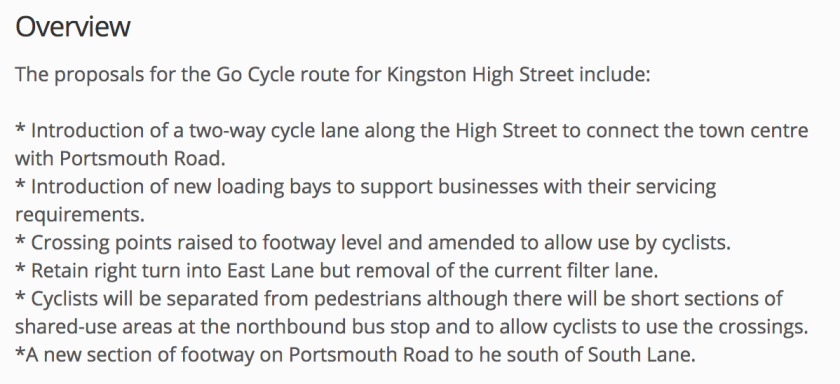
Overall this seems good. There’s one opportunity for comments – here are some thoughts to bear in mind:
- How will the loading bays be funded? These should be funded from the roads budget, not the GoCycle money
- Loading bay hours should be clear and no longer than strictly necessary. This will create a hazard and should not become a spare parking bay
- The route generally looks acceptable; it’s a logical extension of the existing Portsmouth Road route.
- However, the shared use section at the bus stop may well be busier to what has been observed on the existing section. This will require very careful review.
- Are the dual purpose pedestrian / cyclist crossings clear enough to drivers? From observation, drivers often seem unwilling to let cyclists cross what they believe is a crossing for pedestrians
- How will this route work for cyclists wishing to head down Kingston Hall Road towards the new Wheatfield Way route? It’s unclear whether a cyclist will be able to leave the separate route at the roundabout or will have to leave the route earlier.
New Malden to Raynes Park
Closing date: 17 July 2017
This route opens up a link for pedestrians and cyclists between two town centres. As mentioned earlier in this post, this route was one of the original routes that was postponed. Here’s my take from first time round.

The first page of consultation focuses on the wildlife and access to the environment. Which is reasonable, riding somewhere peaceful is always pleasant.
Moving onto the second page, this focuses on security and seems to be addressing some of the complaints from last time.
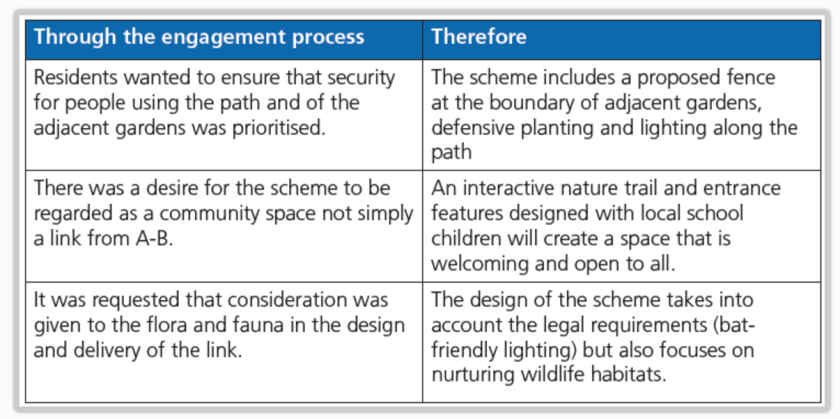
This is interesting. And largely reasonable. More of a community space is likely to attract use, which makes this safer for people. But… does the community space money come out of Mini Holland funding? This might appear churlish, but this is a limited pot that is designed to make cycling safer, not provide a peaceful space for dog walkers. As a reasonable test, we could ask whether the road budget pays for similar public realm improvements? It would certainly be useful if we could offset the impact of motoring in this manner.
The picture above this raises other concerns, however.

This image shows a shared space for cyclists and walkers. See how the two pedestrians have been forced apart for a sprinting cyclist! Hardly ideal. Given the desire (see above) to make this a community space, it’s not unreasonable to expect people to be meandering and pausing as they walk dogs. This will undoubtedly cause conflict with people wishing to ride from one town centre to another. Even without the high-speed lycra warrior beloved of the local-news letter-writer, there is a need to separate these different users.
Onto some questions.
Firstly about usage and how the respondent would use the link. While this is out of the way for my typical usage, it’s definitely something that is an improvement for people nipping to the shops by bike and that’s worth noting.
The following page has four questions about journeys and the space. Again, nothing about support or otherwise.
Moving on, there are questions about what you’d like to see here. We are asked about seating and public art but not about separate pedestrian and cyclist lanes.
And finally there is the opportunity to provide free-form notes under Further Comments. Some thoughts:
- The cycle route must be sufficiently wide to allow people to cycle next to each other, holding a conversation, with cyclists coming the other way.
- The cycle route should be clearly separated from the pedestrian space, allowing for dogs wandering on long leads.
- The protected nature of the nature trail is welcome. However, the Taunton Avenue end needs to be better specified. This has parking on both sides of the road and exits onto a main road. Care will need to be taken here to ensure that this is truly suitable for all cyclists, from 8 – 80 year olds. Do Merton Council have plans for this?
- Regular maintenance will be required – including winter gritting – to ensure that this route remains usable and safe
Finally
Please do fill out the consultation forms. The only way that this will be a success will be via a network of high quality infrastructure that allows cycling to be the default choice for short trips around the borough. Low quality routes that are mixed with pedestrians will not achieve this aim.
